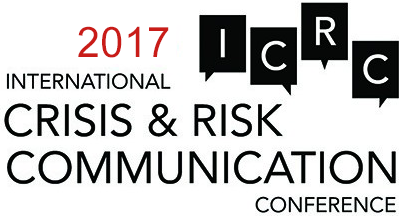
Executive Vice President of Social Media
Firestorm Solutions, LLC
United States
Karen Masullo is Executive Vice President of Social Media for Firestorm. In addition to serving as Firestorm’s own in-house social media advisor, she serves on the Firestorm Expert Council and delivers social media strategy and policy services for Firestorm clients.
As a Marketing Technologist, with specific experience in social media marketing and emerging technologies, her passion and experience are focused on technology innovation, policy development and training, risk mitigation, customer usability, and customer and community interaction.
Prior to consulting, Ms. Masullo was the Director of Global Technology Product Development for world outplacement leader Drake Beam Morin (DBM) where she was one of only three people in DBM’s history to win their highest award for innovation – the da Vinci Award. She led the Outplacement and Career Transition industry in incorporating the emerging social networking tools into all programs and services and trained worldwide on their use.
She was involved in transition projects for many of the Fortune 100 including Cisco, HP, Agilent Technologies, and financial institution accounts such as BankOne, Fifth Third Bank and others.
As an innovation technologist and project manager, Ms. Masullo hosted, trained, and collaborated with counterparts from Japan, France, Australia, The United Kingdom, Brazil, New Zealand, Canada, and Singapore in launching next-generation products and services, customized for local markets.
2015
PRE-CONFERENCE WORKSHOP
Protecting Your Organization or Company with a Scalable Social Media Risk Strategy
The session begins by examining the components of a sound social media risk strategy, and moves on to replicate a variety of crises that require crisis messaging leveraging Firestorm® Message Maps. Participants will be coached through formulating a social media crisis strategy and identifying engagement opportunities or threats via monitoring tools and approaches.
Throughout this highly interactive session, participants will be organized into response teams to manage rapid-fire scenarios that replicate the “blind-side” of social media risk.
This interactive course will help participants:
- Begin to develop custom, organization-specific, social media risk crisis response strategies
- Identify and utilize monitoring tools and approaches
- Recognize resources, and establish and train back-up responders before a crisis
- Take action, if accounts are hijacked or locked out
- Understand ROI and ROnI (Return on No Investment) of a Social Media Risk Strategy
Participants will be able to:
- Craft a Sound Social Media Risk Crisis Response Policy
- Monitor Merged Media for Crisis and Calm
- Create Firestorm® Message Maps for Social Tools
- Identify Emerging Crises
- Respond in a Crisis
- Report after a Crisis
Co-authors
Kristin Saling, M.S. (US Army) – Collaborator Kristin Saling is unable to attend due to military assignment
Jim Satterfield (Firestorm Solutions)
Karen Freberg, Ph.D. (University of Louisville)
Crisis Message Preference Model: Collaborative efforts from practice and research
Crises are unpredictable, yet are not expected. Each situation has different associated characteristics and factors to them, and while there may be some similarities to these based on whether or not they are created by nature or by human, there are different perceptions of them by the audience.
Crisis communication professionals have explored various ways to measure and analyze how individuals perceive these situations and the crisis messages that come with them, but more exploration into predictive behavior models can help better inform how to best communicate and inform our audiences in a time of crisis. Most existing academic research in crisis communications has focused on evaluating the effectiveness of crisis message strategies through surveys, questionnaires, experiments, and interviews.
However, through the partnership with Hootsuite, Firestorm Solutions, and two researchers in the area of crisis communications, we have initiated a joint collaborative project implementing the Riverside Situational Q-sort (RSQ; Sherman, Nave, & Funder, 2010; Funder et al., 2012) to help determine what these differences in audience perceptions of a crisis situation.
Two situations (workplace violence and natural disaster) were explored to help create the Crisis Preference Message Model. Findings and implications will be explored not only to the crisis literature and field, but also provide a new measurement tool to help practitioners determine the most appropriate and effective message at the right time in the right crisis situation.
2014
Pre-Conference Workshop: Protecting Your Organization or Company with a Scalable Social Media Risk Strategy
The session begins by examining the components of a sound social media risk strategy, and moves on to replicate a variety of crises that require crisis messaging leveraging Firestorm® Message Maps. Participants will be coached through formulating a social media crisis strategy and identifying engagement opportunities or threats via monitoring tools and approaches.
Throughout this highly interactive session, participants will be organized into response teams to manage rapid-fire scenarios that replicate the “blind-side” of social media risk.
Topics Covered
This interactive course will help participants:
- Begin to develop custom, organization-specific, social media risk crisis response strategies
- Identify and utilize monitoring tools and approaches
- Recognize resources, and establish and train back-up responders before a crisis
- Take action, if accounts are hijacked or locked out
- Understand ROI and ROnI (Return on No Investment) of a Social Media Risk Strategy
Impact
Participants will be able to:
- Craft a Sound Social Media Risk Crisis Response Policy
- Monitor Merged Media for Crisis and Calm
- Create Firestorm® Message Maps for Social Tools
- Identify Emerging Crises
- Respond in a Crisis
- Report after a Crisis
2013
General Session: Case Study Live! An Interactive Table Top as the Communication Process Unfolds*
2013 Case Study Live Presentation
Almost all corporate disasters and crises are impacted by social and traditional media. Acknowledging this communication and developing plans and messages to manage the events that follow will dramatically improve the outcome for all stakeholders. Effective crisis communication is a crucial element in effective crisis management and assumes a central role from the start.
During Case Study Live!, you will experience a hypothetical developing crisis and the related impacts. Subject matter experts will share the communication required for various stakeholder groups for each stage during an escalating event.
Crisis communication establishes employee and client confidence in the ability of an organization to deal with a crisis and to bring about a rapid resolution. Effective crisis communication is also integral to the larger process of information exchange aimed at eliciting trust and promoting understanding of the relevant issues or actions. Monitoring incidence and prevalence consists of ongoing collection, interpretation and dissemination of data to enable the development of interventions and messages.
* Karen Masullo co-presented with Ann SanCartier and Jim Satterfield.


